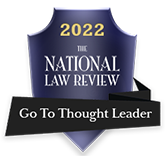Keller and Heckman, founded in 1962, has a broad practice in the areas of regulatory law, public policy, and litigation, serving both domestic and international clients. Our firm is a pioneer in the use of interdisciplinary approaches to problem-solving. Since 1971, we have had an in-house scientific staff that works closely with the firm's attorneys on matters of technical complexity. Many of our attorneys also have government experience and expertise in multiple areas of the law.
Keller and Heckman represents a wide spectrum of companies and trade associations servicing a range of industries, including food and food additives, plastics and other packaging materials, pesticides, industrial and specialty chemicals, consumer products, drugs and medical devices, transportation, and telecommunications. The firm's practice covers the diverse regulatory areas that affect these industries, as well as business counseling and litigation issues. Our attorneys and scientists emphasize creative service to clients involved in the development of new products, services, and markets.
Our attorneys and staff serve clients from offices in Washington DC, Brussels, San Francisco, Shanghai, and Boulder. We are also a member of Mackrell International, a network of 90 independent law firms in more than 170 offices in 60 countries. By our membership in Mackrell International, we are able to assist our clients in satisfying their legal requirements across the globe.
Keller and Heckman, founded in 1962, has a broad practice in the areas of regulatory law, public policy, and litigation, serving both domestic and international clients. Our firm is a pioneer in the use of interdisciplinary approaches to problem-solving. Since 1971, we have had an in-house scientific staff that works closely with the firm's attorneys on matters of technical complexity. Many of our attorneys also have government experience and expertise in multiple areas of the law.
Keller and Heckman represents a wide spectrum of companies and trade associations servicing a range of industries, including food and food additives, plastics and other packaging materials, pesticides, industrial and specialty chemicals, consumer products, drugs and medical devices, transportation, and telecommunications. The firm's practice covers the diverse regulatory areas that affect these industries, as well as business counseling and litigation issues.
Our attorneys and scientists emphasize creative service to clients involved in the development of new products, services, and markets. Our attorneys and staff serve clients from offices in Washington DC, Brussels, San Francisco, Shanghai, and Boulder. We are also a member of Mackrell International, a network of 90 independent law firms in more than 170 offices in 60 countries. By our membership in Mackrell International, we are able to assist our clients in satisfying their legal requirements across the globe.












